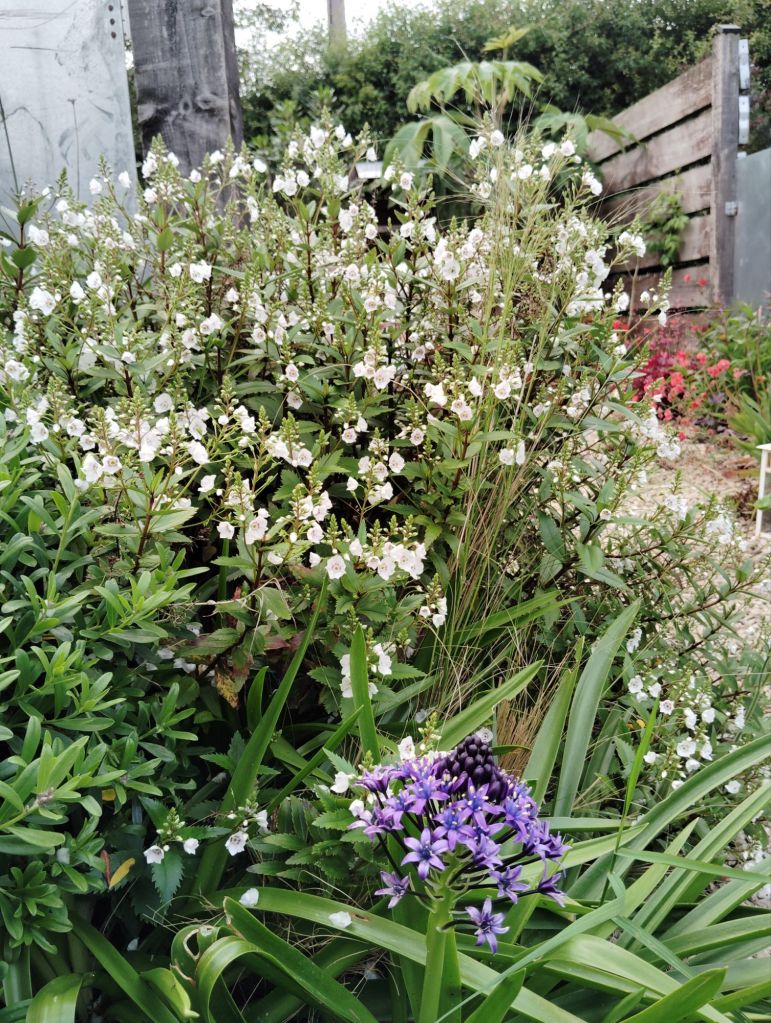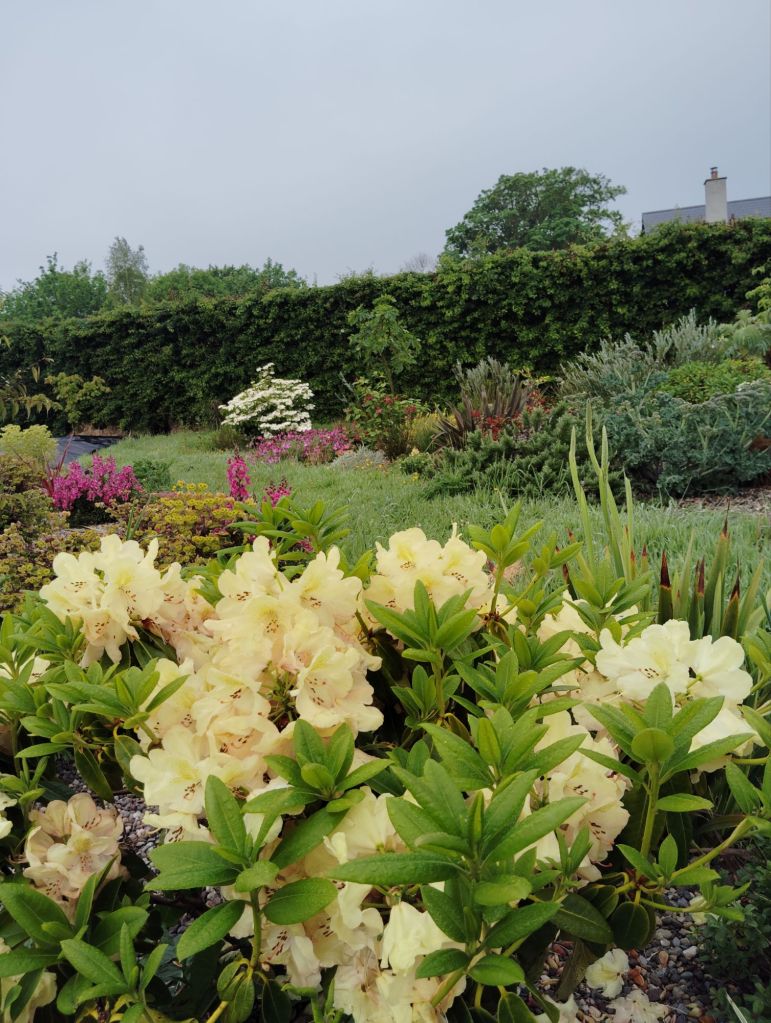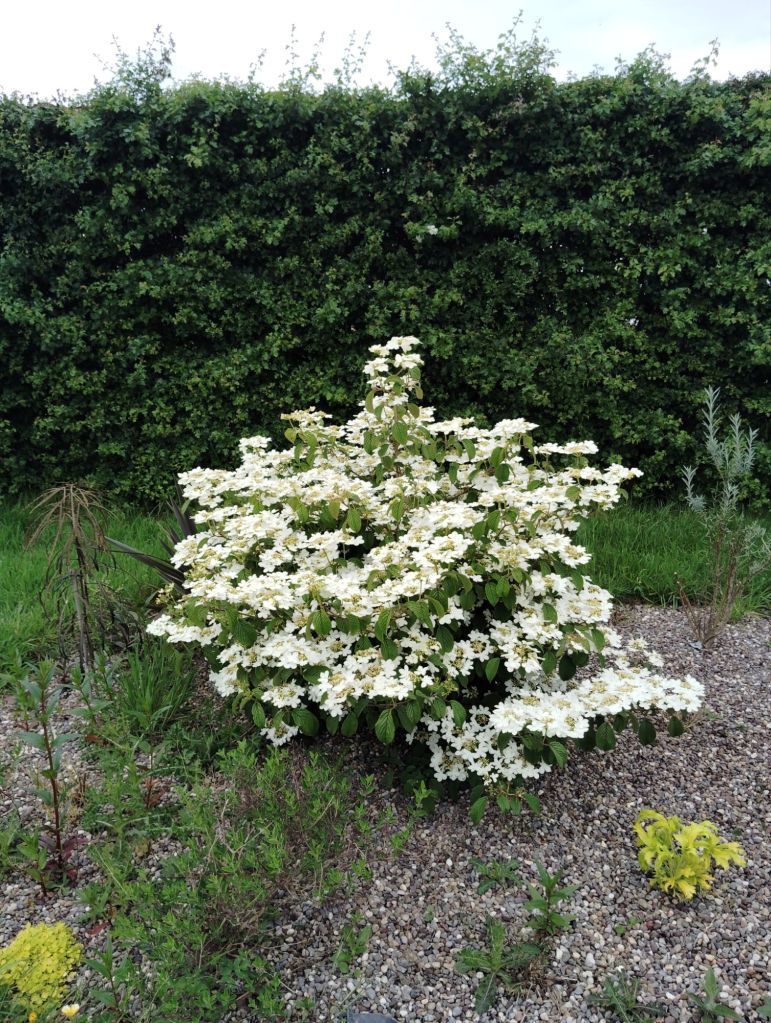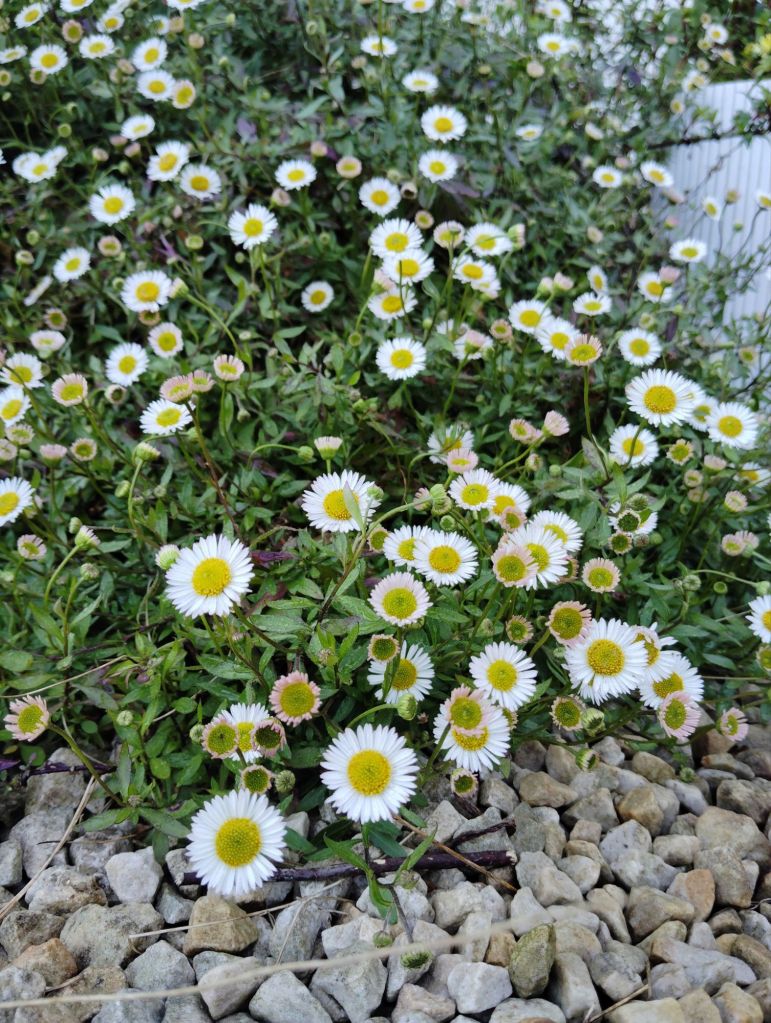






A few photos of plants in the garden this evening
1.Valeriana officinalis, a number of these have self-seeded, I like their structure and flowers.
2. Geranium ‘Orion’ is a sociable plant mingling with the foliage of Cornus alternifolia ‘Argentea’, while it does not flower as long as G. ‘Rozanne’, I do value it for its more relaxed attitude.
3. Scilla peruviana, they skipped a year flowering last year, this year one of the five has flowered, they are getting over-grown by neighbouring shrubs, I may need to move them to a more open sunny position.
4. Parahebe ‘Avalanche’ is a favourite of mine in the garden centre, it is evergreen, low growing and flowers for 5-6 months, a beautiful and easy to grow low shrub.
5. and 6.Heuchera flowers( can’t remember which one…) the red foliage in the background is the new growth of Nandina domestica ‘Obsessed’, a super plant!
7. Fatsia polycarpa ‘Green Fingers’ is really starting to grow this year, this is the first year that it has produced big impressive leaves. The first winter the plant got burnt back to soil level by frost, but recovered the following year. I am delighted it has finally really got going.































